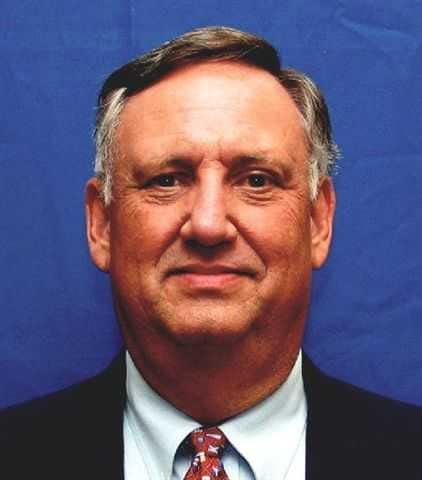Walters: Delta tunnel water project may finally be nearing a historic decision
It’s been almost a half-century since I first heard the term “peripheral canal” uttered by William Gianelli, who was then-Gov. Ronald Reagan’s top water official. The project, in one form or another, had already been kicking around for decades.
The California Water Project became operative in the 1960s and was the most prominent legacy project of Pat Brown, whom Reagan had defeated in 1966.
The project dams the Feather River near Oroville and releases impounded water to flow down the Feather into the Sacramento River and eventually into the Sacramento-San Joaquin Delta. Pumps at the southern edge of the Delta suck the water into the California Aqueduct, which carries it down the San Joaquin Valley to more pumps over the Tehachapi Mountains into Southern California.
Pumping water out of the Delta changes the massive estuary’s natural flows and, as widely recognized, damages habitat for fish and other wildlife. The envisioned 44-mile-long peripheral canal would have carried water around the Delta to the head of the aqueduct thereby, it was said, improving water supply reliance and protecting fish.
However, there was widespread opposition, mostly from environmentalists who doubted the canal would have a beneficial impact. The project stalled until Pat Brown’s son, Jerry, became governor in 1975 and attempted to complete the last remaining link in his father’s landmark water plan.
Brown relentlessly pressed the Legislature to authorize the canal and finally succeeded, but the compromise version failed to mollify environmentalists and alienated San Joaquin Valley farmers. The two disparate groups formed an odd-bedfellows alliance that defeated the project in a 1982 referendum, the same year Brown’s bid for a U.S. Senate seat failed.
Voter rejection put the project in political limbo for two-plus decades, until Arnold Schwarzeneger became governor and proposed twin tunnels, instead of a canal, to bypass the Delta. Jerry Brown returned to the governorship in 2011 and once again sought to get it done.
It was still just an idea when Gavin Newsom succeeded Brown in 2019. Almost immediately he downgraded it to one tunnel and ordered the Department of Water Resources to get it going. The much-revised project barely survived a 2016 ballot measure that probably would have killed it, and with Newsom’s governorship down to its last couple of years, it is nearing the decisive moment.
The project has undergone several name changes over the decades but is now dubbed the Delta Conveyance Project. Recently, the water agency released an updated report on the tunnel, raising its cost to $20 billion but insisting that it still pencils out in a cost-benefit analysis.
“For every $1 spent, $2.20 in benefits would be generated,” Department of Water Resources officials declared. “The report also shows the very real cost of doing nothing, posing significant future challenges to supplying water to California communities.”
Cost-benefit claims of big public works projects are notoriously subjective because they rely on notoriously unreliable cost estimates and equally squishy definitions of benefits.
The tunnel’s $20 billion cost is already many billions of dollars over earlier estimates. As costs climb, the willingness of downstream water agencies to cover construction bonds is still uncertain, and environmental groups are still as opposed as they were in 1982.
By its nature, a bypass tunnel would reduce water flows through the Delta. As Newsom’s administration tries to clear financial and environmental issues, it is also trying to get San Joaquin Valley farmers to take less water from its rivers so that more can flow through the Delta.
The interplay between those two somewhat contradictory efforts is one of the project’s most intriguing aspects.

CalMatters is a public interest journalism venture committed to explaining how California's state Capitol works and why it matters.
This article originally appeared on Ventura County Star: Walters: Delta tunnel water project may finally be nearing a decision
